Celtic mythology is a treasure trove of enchanting tales, mysticism, and powerful deities that have captured the imagination of generations. Its rich pantheon of gods and goddesses, each with unique powers and attributes, reflect the values and beliefs of the ancient Celts, who held a deep reverence for nature, fertility, war, and sovereignty. But who are these fascinating beings, and what can we learn from the stories that have been passed down through the ages?
In this journey, we will delve into the captivating world of Celtic gods and goddesses, from the formidable Tuatha Dé Danann to lesser-known regional and specialized deities. We will explore their roles, powers, and influence on the people who worshiped them, and examine the lasting impact they have had on modern spirituality and culture.
Key Takeaways
Explore the vast Celtic Pantheon, including legendary gods and goddesses such as Dagda and Lugh
Discover nature & fertility deities like Cernunnos & Epona. War & sovereignty figures like The Morrigan & Macha. Plus lesser known regional or specialized gods Arawn and Bres.
Uncover how Roman syncretism has shaped modern interpretations of these ancient beliefs.
The Celtic Pantheon: A Brief Overview
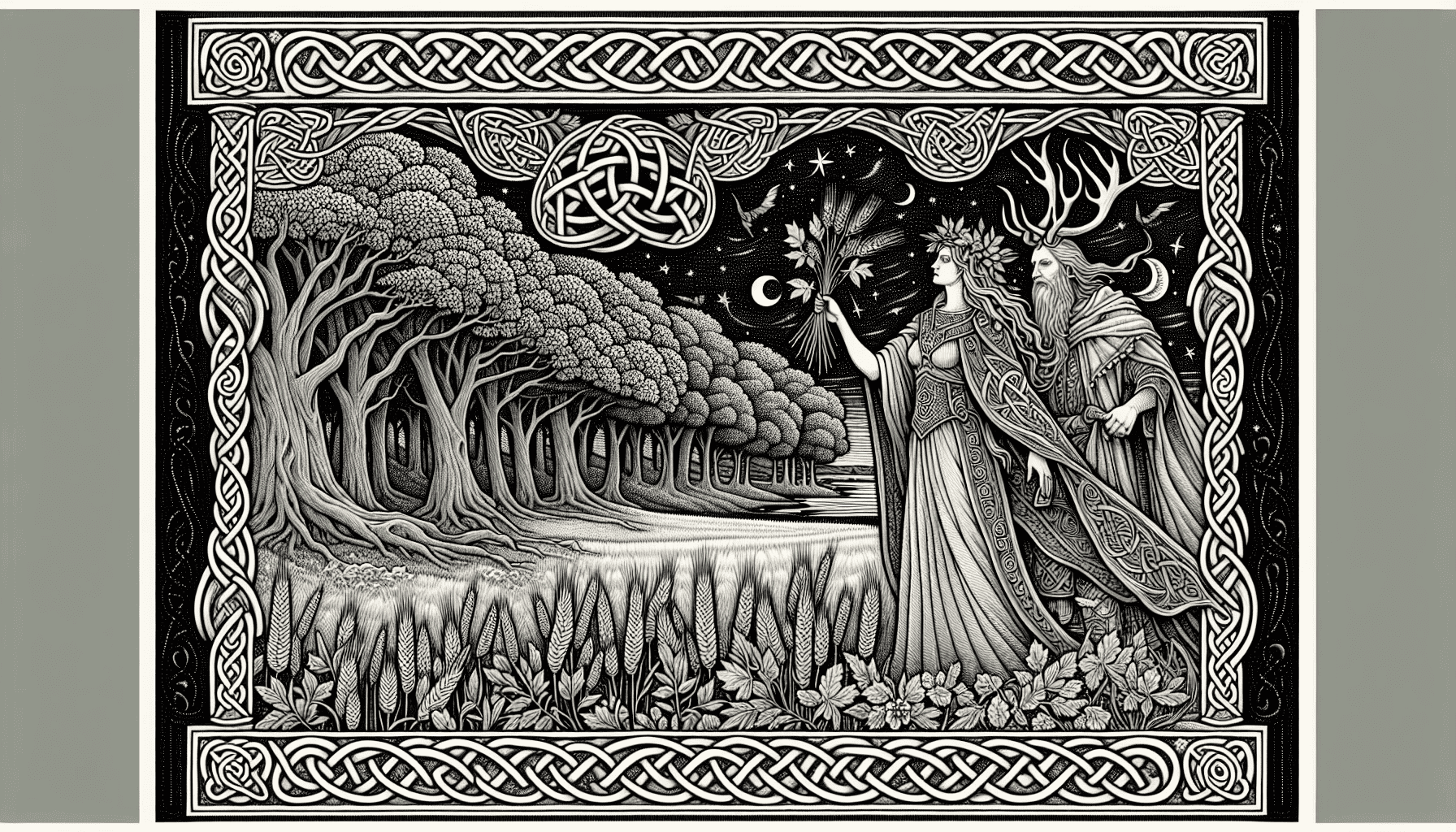
The Celtic Pantheon is a vast collection of gods and goddesses, each possessing distinct powers and characteristics, typically related to nature, fertility, war, and sovereignty. With over 400 deities acknowledged by the Celts, some of these divine beings, including the Celtic god, were widely revered throughout the Celtic world, whereas others appeared to be less recognized and worshiped only in particular areas or certain places.
One such group of deities that held significant importance in pre-Christian Ireland was the Tuatha Dé Danann. This legendary group of gods and goddesses, including the powerful Dagda and the mother goddess Danu, embodied the traits most esteemed by the people of ancient Ireland. Their influence extended to various aspects of daily life, such as:
love
war
weather
seas
Although the Druid priests did not document their tales, the Romans of the first century BCE documented the Celtic myths, and later, Irish monks and Welsh authors wrote down their traditional narratives.
The Tuatha Dé Danann: Ireland’s Legendary Gods
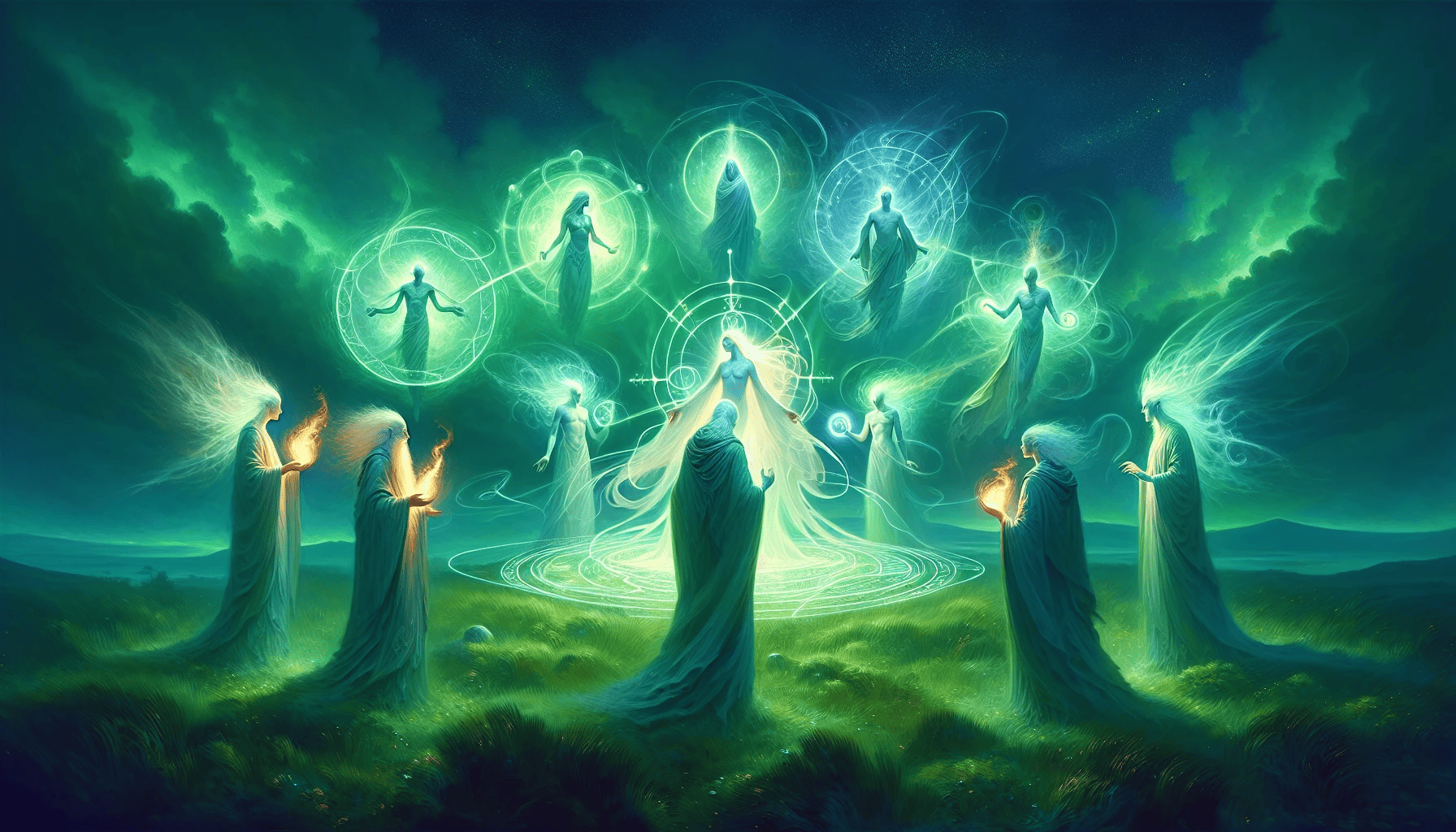
The Tuatha Dé Danann, a group of Irish gods and goddesses including Dagda, Lugh, and Brigid, were held in high regard in Irish mythology and were considered to be the ancestors of the Celts. These legendary gods played significant roles in the mythological stories and were believed to possess remarkable powers and attributes.
The upcoming sections will provide an in-depth look at the stories of Dagda, Lugh, and Brigid, highlighting their unique attributes and their influence on the Celtic world.
Dagda: The All-Powerful Father God
Dagda, the all-powerful father god, was the leader of the Tuatha Dé Danann and father of many important Celtic gods and goddesses. He was associated with agriculture, fertility, and magic, and was considered the primary Celtic deity venerated across western Europe. Dagda possessed a number of powerful weapons, such as a large club capable of felling 10 men with a single strike, and a harp that could command the seasons. He also had several partners, notably the Morrigan, the Celtic goddess of war and fate.
Dagda’s cheerful and good-natured disposition was reflected in his tall and pot-bellied stature, symbolic of plentitude and generosity. His most prized possessions included:
An enchanted harp
A magical staff
A bottomless cauldron
Two pigs – one that was always growing and one that was always roasting
His leadership and prowess in both peace and war made him one of the most revered figures in Celtic mythology, a powerful celtic god.
Lugh: The Skilled Warrior and Craftsman
Lugh, sometimes referred to as the Celtic sun god, was a renowned and significant deity in Celtic mythology. God Lugh was a skilled warrior and craftsman. He was also associated with the Roman god Mercury. His most renowned accomplishment was the slaying of his grandfather, the giant Balor of the Fomorians, and his leadership of the Tuatha de Danann to victory against the Fomorians who had been oppressing them.
Lugh’s name, “Lugh Lámhfhada,” translates to “Lugh of the long arm” in Irish, referring to his remarkable capacity to throw a spear over a great distance. His adeptness in the crafts and his prowess in warfare made him a revered figure among the ancient Celts and an essential member of the Tuatha Dé Danann.
Brigid: The Triple Goddess of Healing, Poetry, and Smithcraft
Brigid, the Celtic goddess Brigid, was a triple goddess in Celtic mythology, consisting of three sisters of the same name, each with their own respective domains – poetry, healing, and smithing – to rule over. Daughter of the powerful Dagda, Brigid was an important figure within the Tuatha Dé Danann and was later incorporated into Christian teachings as Saint Brigid of Kildare.
Brigid’s association with both fire and water connected her to the perpetual flame of Kildare and the numerous sacred wells dispersed throughout Ireland. As a goddess of healing, poetry, and smithcraft, Brigid’s influence extended far beyond the realm of the Tuatha Dé Danann and into the hearts and minds of those who revered her.
Nature and Fertility Deities in Celtic Mythology
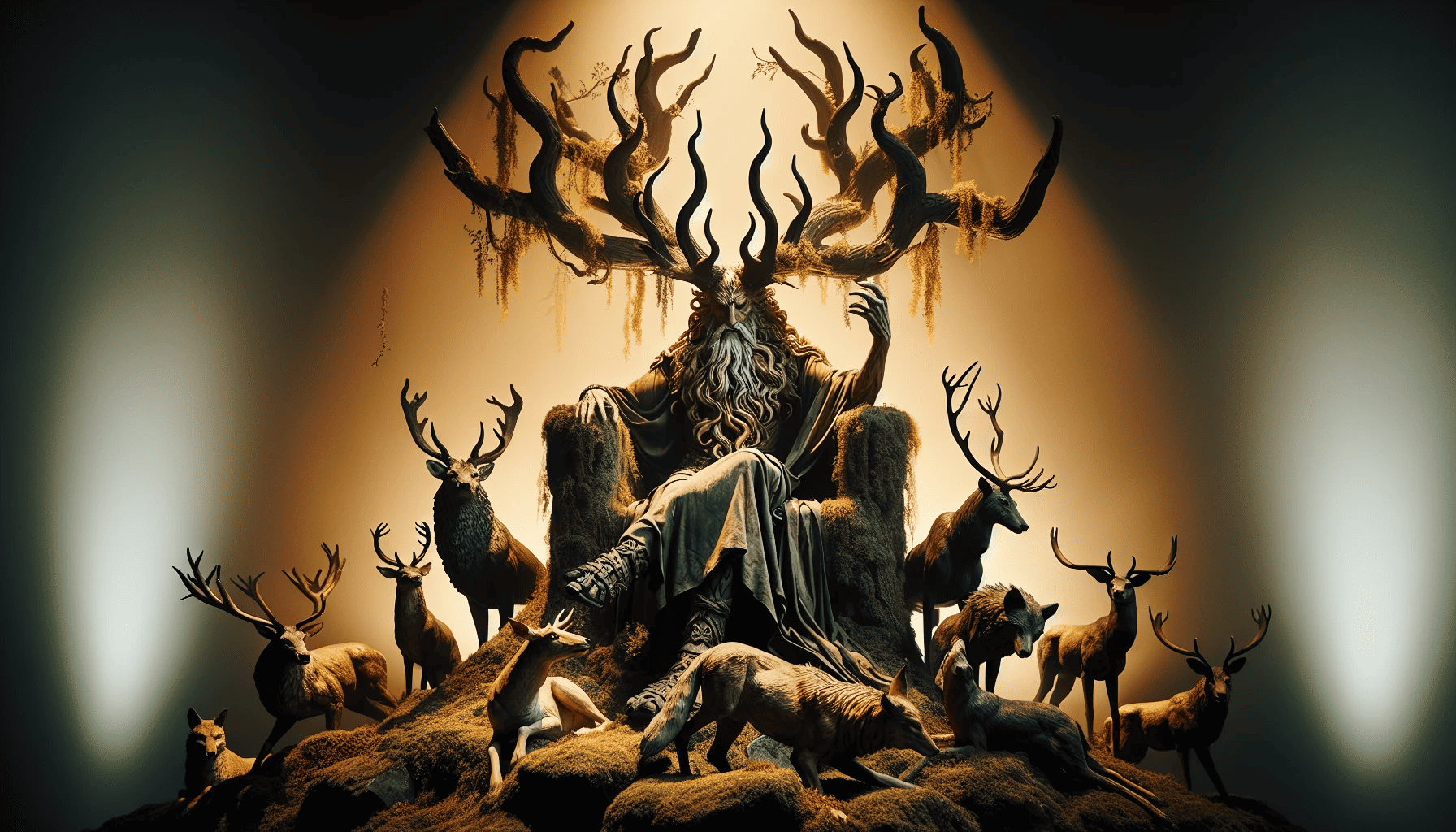
Nature and fertility deities played significant roles in Celtic mythology, with gods and Celtic goddesses such as Cernunnos, Epona, and the Celtic sun goddess often associated with animals and the natural world. These connections to nature can be seen as a reflection of the importance of the Celtic myth in their culture.
The upcoming sections will provide a more detailed look at the stories of Cernunnos and Epona, emphasizing their unique qualities and their influence on the Celtic world.
Cernunnos: The Horned God of the Forest
Cernunnos, the horned god of the forest, was associated with wild animals, fertility, and wealth. He was frequently represented in a cross-legged pose, with antlers or horns on his head and sometimes adorned with a sacred torque neck ornament. Many animals were held in high esteem by Cernunnos, such as horned serpents, bulls, stags, and rams.
Although most evidence supporting the worship of Cernunnos has been discovered in Gaul (the name given to France by the Romans) and Britain, with less influence observed in Ireland, his association with the wild and untamed aspects of nature has led to a resurgence of interest in his worship, particularly within modern pagan and Wiccan traditions.
Epona: The Protector of Horses and Symbol of Fertility
Epona, the Celtic horse goddess, was renowned for her association with fertility and a cornucopia of horses, asses, mules, and oxen. She was venerated in a variety of locations throughout Western Europe, not solely in Ireland. Ears of grain, foals, and a cornucopia were all linked to Epona. Her role extended beyond fertility, as she was also the patron and protector of the Roman cavalry.
Inscribing images of Epona into niches of barns and stables was believed to invoke the protection of the goddess over the animals. Her influence and importance in both Celtic and Roman culture highlights the interconnectedness between these ancient civilizations and their shared reverence for nature and fertility.
War and Sovereignty Deities: The Morrigan and Beyond
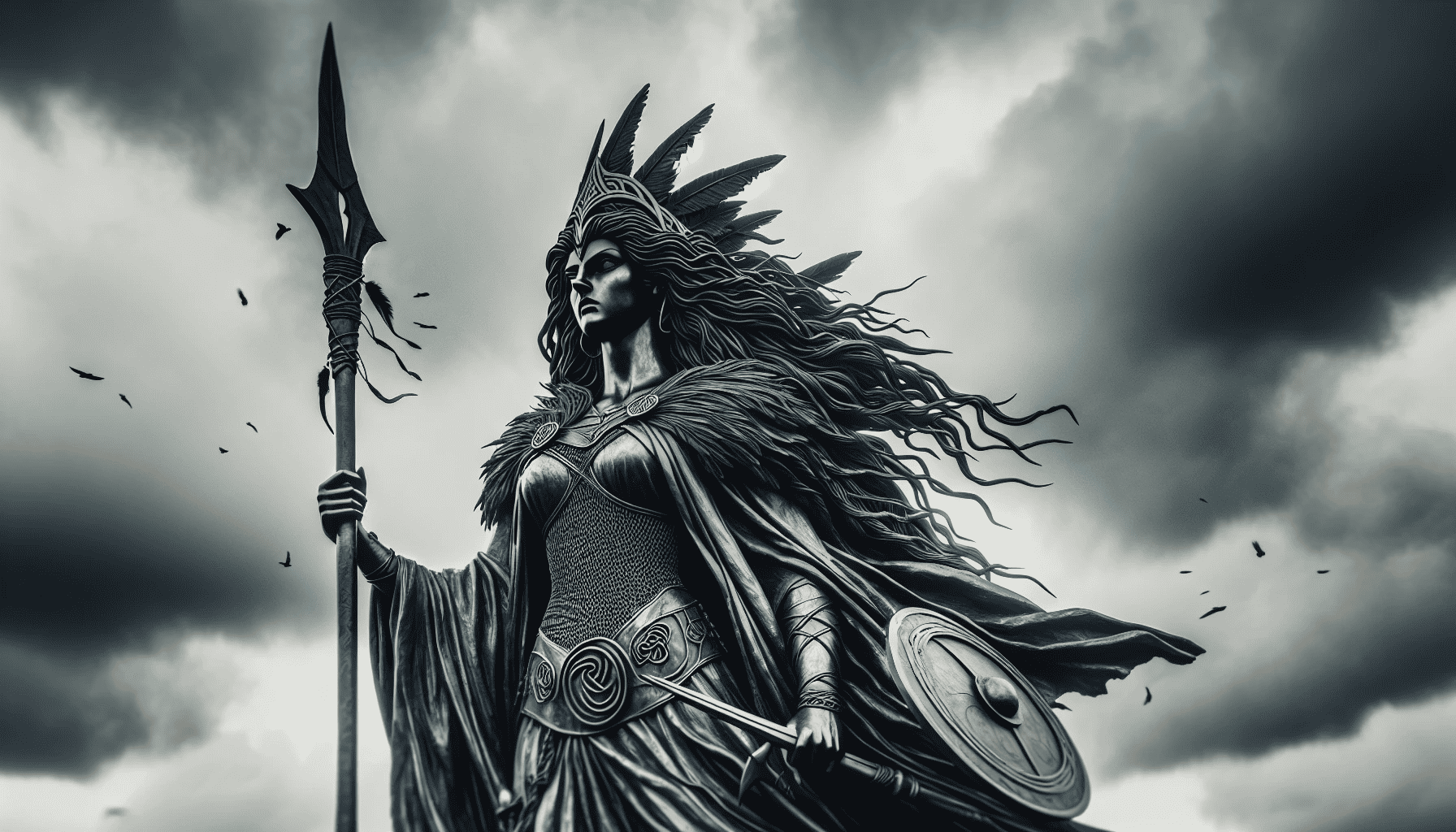
War and sovereignty deities, such as the Morrigan and Macha, played significant roles in Celtic mythology, often associated with battle, fate, and protection.
The upcoming sections will delve into the stories of the Morrigan and Macha, focusing on their unique capabilities and their influence on the Celtic world.
The Morrigan: The Shape-shifting Goddess of War and Fate
The Morrigan, a shape-shifting goddess of war and fate, often appeared as a crow or raven and was a triple goddess in Irish mythology. She possessed the ability to anticipate the result of any conflict and was known to embolden her warriors while simultaneously instilling terror in the hearts of their adversaries. The Morrigan was also one of the multiple triple deities present in Celtic mythology. The three sisters had a selection of appellations, including:
Morrigan
Medb
Badb
Macha
Eriu
Fodla
The Morrigan’s powers extended beyond her abilities in battle, as she also possessed the capability to forecast the result of battles and anticipate violent deaths. Her encounters with the hero Cúchulainn are a testament to her prowess, as she tried and failed to seduce him, eventually prophesying his death in battle accurately.
The Morrigan, an ancient Celtic goddess, held an enigmatic presence and the influence she wielded in both war and peacetime made her a revered figure in Celtic mythology.
Macha: The Goddess of War and Protection
Macha, the goddess of war and protection, was generally associated with the land and its fertility, acting as a protector. Macha has strong connections with horses as well as other livestock. This correlation is a reflection of the culture and economy in the region. She was considered a different form of the Morrigan and played a significant role as a guardian in times of both war and peace.
Macha’s stories emphasize her strength, power, and desire for vengeance. As a goddess of war, she was believed to punish those who had offended her or her people. Her connection to the land and its fertility, as well as her role as a protector, made her an important figure in Celtic mythology and a powerful symbol of the ancient Celts’ connection to their environment. As a Celtic mother goddess, Macha’s influence was deeply rooted in the lives of her followers.
Lesser-Known Celtic Deities: Regional and Specialised Gods
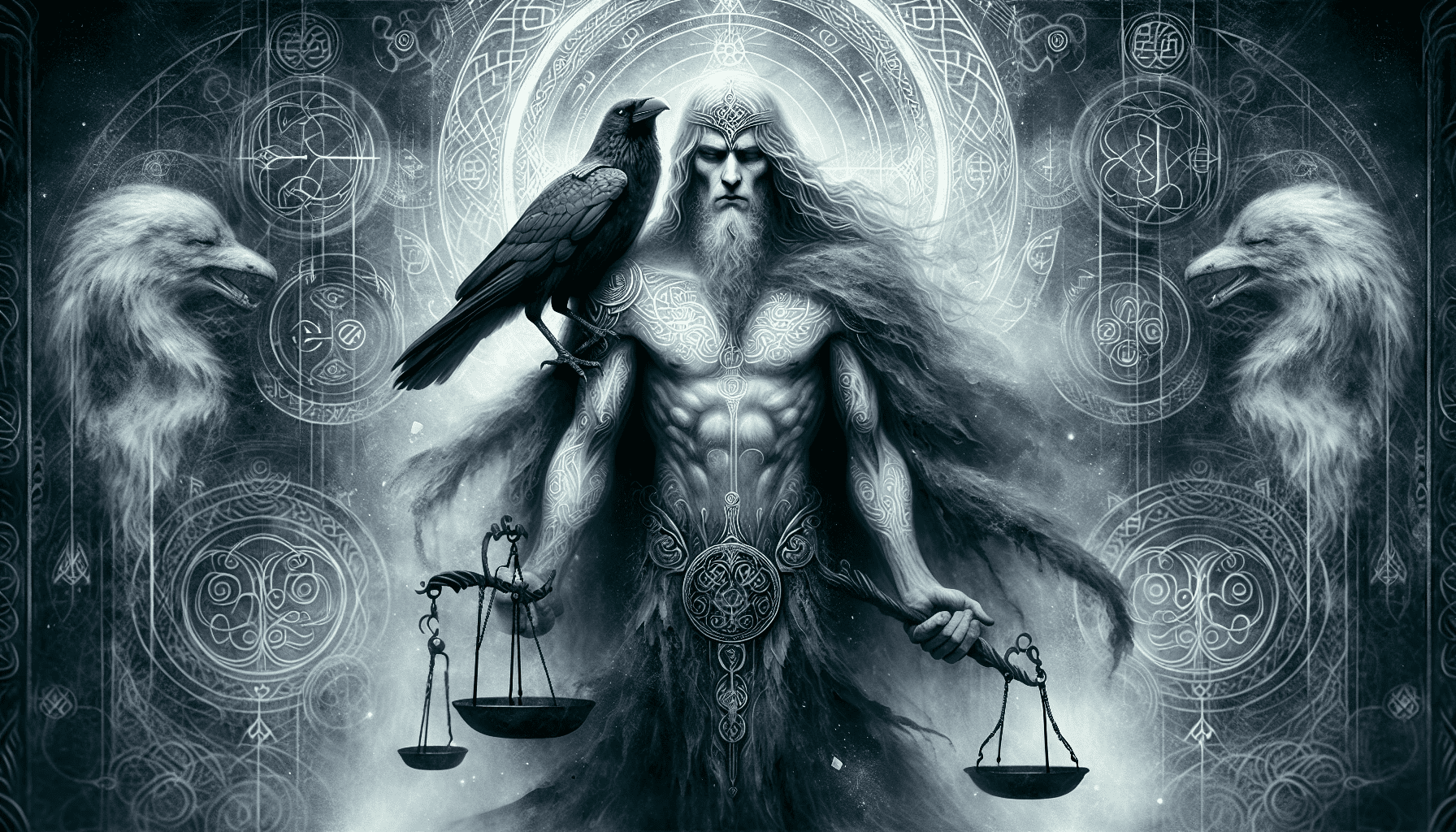
Many lesser-known Celtic deities were usually regional or specialized gods, each with unique powers and attributes. The sections below will provide more information about the stories of Arawn and Bres, emphasizing their unique abilities and how they influenced the Celtic world.
Arawn: Ruler of the Underworld
Arawn, the ruler of the underworld in Welsh mythology, was associated with shapeshifting and justice. As the King of the Otherworld, Arawn was renowned for his great magical and hunting prowess. The myth concerning Arawn and Pwyll involved the two exchanging positions due to one of Pwyll’s hounds slaying a stag from Annwn during a hunt. This story highlights Arawn’s connection to the underworld and his ability to shape-shift.
Arawn’s association with death and justice made him a significant figure in Celtic mythology, revered by those who sought balance between the human realm and the forces of the underworld. His unique powers and attributes set him apart from other deities, offering a different perspective on the complex and diverse pantheon of Celtic gods.
Bres: The Fertility God and Agricultural Teacher
Bres, the fertility god and agricultural teacher, was a beautiful and handsome man, albeit lacking leadership qualities. The offspring of the Goddess Eriu and the Fomorian King Elatha, Bres married the goddess Brigit and became the King of Ireland. However, he was regarded as a sniveling king with demonic tendencies. Despite his flaws, Bres imparted agricultural knowledge to the Tuatha Dé Danann in order to ensure his own security.
Bres’s role as a fertility god and agricultural teacher highlights the importance of agriculture in Celtic society and the connection between the land and its people. His story serves as a reminder of the complex relationships between the various gods and goddesses, as well as the importance of balance and harmony within the Celtic pantheon.
The Influence of Roman Deities on Celtic Mythology
The influence of Roman deities on Celtic mythology led to the syncretism of some gods and goddesses, with similarities between the two pantheons. The Romans generally adopted a policy of religious tolerance and incorporated aspects of the conquered people’s religious heritage into their own. They sought to equate their own gods with those of the conquered people, resulting in a blend of Roman and local beliefs. This led to the amalgamation of Roman and Celtic gods in terms of style and symbolism, reflecting the marked cultural disparities between the two pantheons.
Examples of Roman deities impacting Celtic mythology include major Celtic gods such as:
Taranis, the Thunder God
Lugus, the Sun God
Nodens, the Hunting and Healing God
Deae Matres, Nursing Mother Goddesses
The blend of Roman and Celtic beliefs showcases the interconnectedness of these ancient civilizations and their shared reverence for the divine realm, which has shaped the course of history and the evolution of religious beliefs across Western Europe.
Modern Interpretations and Revival of Celtic Deities
Contemporary interpretations and the revival of Celtic deities have sparked a resurgence of interest in Celtic mythology, with many individuals integrating these age-old beliefs into their spiritual practices. Various means such as:
Druidry
Witchcraft
Paganism
Celtic shamanism
integrate the ancient wisdom and mythology of the Celtic people into their spiritual beliefs and rituals. Some practitioners view Celtic deities as different facets of a universal godhead while acknowledging the diversity of interpretations.
The resurgence of interest in Celtic mythology has had a considerable influence on modern spirituality. Numerous individuals are attracted to the ancient knowledge and symbolism found in Celtic mythology and incorporate these convictions and practices into their spiritual lives. This revival has led to the formation of new rituals, ceremonies, and spiritual practices inspired by Celtic mythology.
It has also provoked a renewed curiosity in connecting with nature and the natural world, as the Celts had a profound reverence for the land and its cycles.
Summary
In this exploration of the captivating world of Celtic gods and goddesses, we have discovered the rich pantheon of deities that were revered by the ancient Celts, from the formidable Tuatha Dé Danann to lesser-known regional and specialized gods. These divine beings, each with unique powers and attributes, reflect the values and beliefs of the ancient Celts, who held a deep reverence for nature, fertility, war, and sovereignty.
The lasting impact of Celtic mythology on modern spirituality and culture serves as a testament to the timeless appeal and wisdom of these ancient beliefs. Whether through the resurgence of interest in nature-based spirituality or the continued fascination with the stories and legends of these divine beings, the influence of Celtic gods and goddesses continues to shape our understanding of the world around us, inspiring us to forge a deeper connection with the natural world and the divine forces that guide us.
Frequently Asked Questions
Who was the main Celtic god?
The main Celtic god was The Dagda, known as “the Good God” and the leader of the Tuatha De Danann. He was associated with fertility, agriculture, manliness and the weather, wielding a club in many depictions. His other names include Eochu or Eochaid Ollathair, Ruad Rofhessa, and Dáire.
Who is the most feared Celtic god?
The most feared Celtic god is the Dagda, depicted as a strong and wise leader of the pantheon of gods. Also known as ‘the Good God’, he is associated with fertility, agriculture, manliness and the weather. He has assumed the role of Odin in Celtic mythology as the most powerful god in the Celtic mythos.
Who is the most powerful Celtic goddess?
The most powerful Celtic goddess was the Morrgan, also known as the “Phantom Queen”, who was a feared deity of both death and war. She appeared as a single being or a triple goddess forming a trio of sisters who protected destiny and prophecy.
Who are the main gods and goddesses in the Celtic pantheon?
The main gods and goddesses in the Celtic pantheon include Dagda, Lugh, Brigid, Cernunnos, Epona, the Morrigan, and Macha.
What are the primary attributes of Dagda, the all-powerful father god?
Dagda is an all-powerful father god revered for his connection to agriculture, fertility and magic, as well as being the leader of the Tuatha Dé Danann.


1 thought on “Exploring the Pantheon: A Comprehensive Guide to Celtic Gods and Goddesses”
Comments are closed.